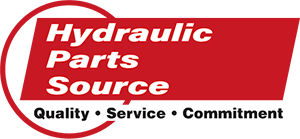Valves 101: It’s All About Control - and Some Other Need-to-Know Facts
We all know distributors are a valuable resource for end-users of fluid power products, often providing local, on-site, customer support. Closer to end-users than manufacturers, their customers should be able to rely on that local support.
To help provide that support, knowledge about the products they sell helps to meet the support needs of their customers/end-users. Fluid power distributors can take what they learn about customers’ specific pumps, motors, and valves, and put that knowledge to use for their clients. If you are a distributor and your end-users can benefit from knowing more about the products you offer, this article is for you.
As pumps and motors are responsible for supplying power and energy within a hydraulic system, valves are the mechanical devices used to control that power by regulating the flow of fluid.
They can be used to redirect pressurized fluid, control the level of flow to a certain area, or completely close a line.
Although there are dozens of varieties that all serve different purposes, in this article, we will focus on these three major types of hydraulic valves:
- Pressure Control Valves
- Flow Control Valves
- Directional Control Valves
If you are looking to provide guidance when your customer has a question or a problem, or if they’re asking you to consult on purchase decisions more confidently, we recommend starting with basic knowledge of how pressure control valves, flow control valves, and directional flow valves operate.
Pressure Control Valves
Hydraulic pressure control valves are used to regulate the fluid pressure that is passing through hydraulic systems and prevent rises in pressure that may result in system problems. They are also used to maintain a set pressure in a part of a hydraulic circuit.Different types of pressure control valves include:
- Pressure relief valves
- Pressure Reducing valves
- Sequence valves
- Counterbalance valves
Pressure reducing valves are used to balance hydraulic circuit pressure with pressure in the main circuit. When the outlet pressure reaches a preset level, the valve opens, a piston moves to release pressure, and it keeps the outlet pressure constant.
Sequence valves are used to control the sequential operation of actuators. If the inlet pressure exceeds a preset level, they add pressure to the outlet side. A check valve allows for this directional control.
Counterbalance valves are used to maintain hydraulic pressure or load backpressure on a cylinder by releasing flow levels to keep pressure constant. Like sequence valves, they use a check valve to provide a counterbalance of flow, lifting the cylinder up to freely pass.
Flow Control Valves
Hydraulic flow control valves do what they say: They control flow rates in hydraulic circuits, with an end goal of controlling speed elsewhere in a fluid power system.In hydraulic systems, these valves are used to regulate flow rates to actuators, such as motors and cylinders, and with it the speed of those components.
Flow rate also determines rate of energy transfer at any given pressure. A common physics concept is used to determine this transfer:
Actuator force x distance traveled = work done on load
This equation shows that the actuator force, multiplied by the distance through which it moves (stroke), equals the work done on the load. The energy transferred must also equal the work done, and speed determines the energy transferred.
In other words, regulating speed is the primary function of flow control valves because:
Energy transfer must equal work done, and is determined by multiplying force times stroke
Speed determines the amount of energy transferred
Flow rates determine the speed of an actuator
There are a variety of flow control valve designs, each intended for specific applications. The most common types include ball, diaphragm, needle, and butterfly.
Directional Control Valves
Directional control valves have three main functions: to stop fluid flow, to allow fluid flow, or to change direction of fluid flow between hydraulic cylinders and motors.They typically consist of a sliding spool inside a cylinder, which restricts or permits fluid flow to control the fluid path. They can also consist as a poppet to control flow, which works in the same way.
Directional control valves can stop the flow suddenly and are sometimes referred to as either “switching” or “bang-bang” valves for the sound they make when operating.
There are two other types of directional valves that can control fluid flow in more complicated hydraulics systems:
- Proportional valves -Allow infinite positioning of spools and flow volumes for more complex circuits
- Servo valves - Operate with high accuracy, repeatability, low hysteresis, and high frequency response for sophisticated loop systems (and are often more expensive than proportional valves)
More Product Knowledge to Steer Satisfied Customers
In summary, hydraulic valves provide the control needed to keep hydraulic systems working. They act as the steering wheel to guide the moving parts of a functional hydraulics system.And whether they are used to control flow by redirecting pressurized fluid (pressure control valves), controlling the level of flow and speed (flow control valves), or completely stopping the directional flow (directional control valves), knowing about different types of valves and their intended function can be a great tool to help you support your customer’s individual needs.
Knowing the basics of different components and how they work is the key to offering this guidance, and to provide a valuable resource to your customers / end users.Need more help? Call the HPS Customer Service team at (888) 477-7278 for assistance. We’re here to help with your fluid power questions 8 – 6 ET, Monday through Friday.

